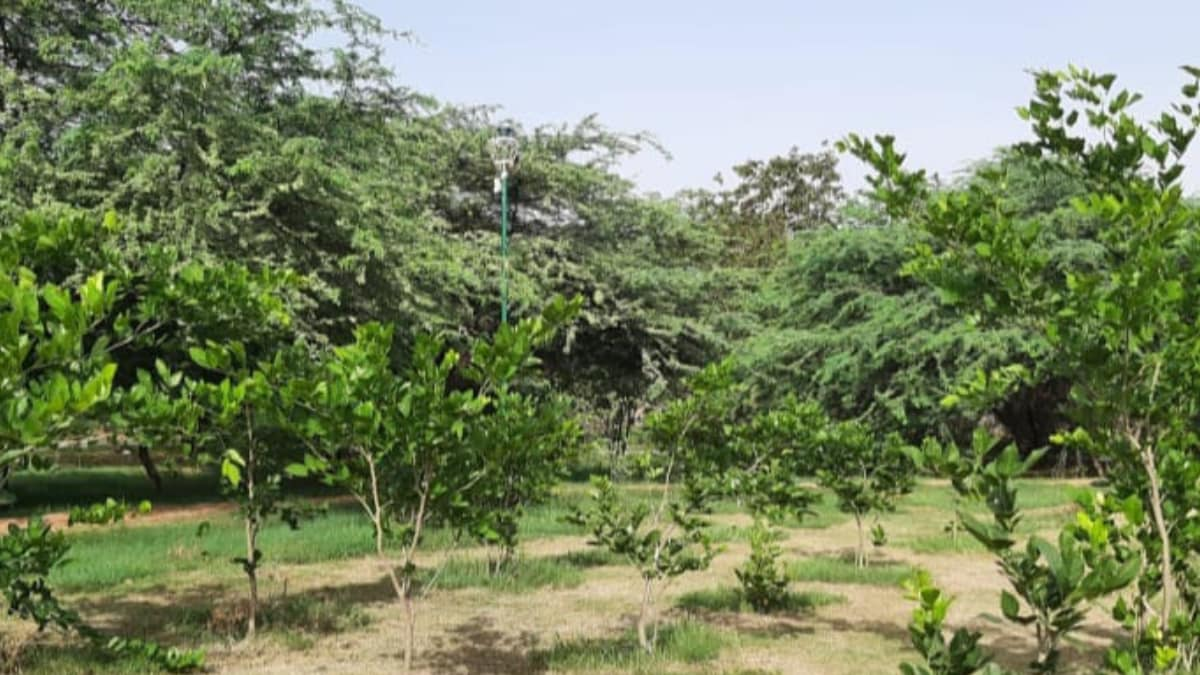Delhi and the National Capital Region (NCR), marked by the Yamuna River and the Delhi Range, span 1,483 square kilometers, forming a bustling urban ecosystem. Despite its vibrancy, the city faces dangerous air quality, with the Air Quality Index (AQI) often falling between “bad” and “very poor”. According to the sixth annual Global Air Quality Report, Delhi is the most polluted city in the world. Rapid urbanization and industrialization have led to alarming levels of particulate matter, nitrogen dioxide and ozone, making the air sometimes almost unbreathable. However, a transformative change is occurring to address this environmental crisis: the rise of urban forests.
The role of urban forests
Urban forests are essential to combat air pollution. Trees absorb harmful gases such as carbon monoxide, nitrogen dioxide and ozone while releasing oxygen.
Pradip Shah, Co-Founder, Grow-Trees.com, says, “Urban forests play a vital role in fighting urban air pollution. It is estimated that in just one year, a mature tree can absorb more than 48 pounds of carbon dioxide from the atmosphere. Trees also release oxygen and remove particles along with other pollutants, making them natural air purifiers. In fact, our strategic tree plantation in Delhi has created natural carbon sinks and made a noticeable difference to the surrounding air quality.
They also act as natural air purifiers, removing particles and other pollutants from the air. Strategic tree planting in urban areas like Delhi can significantly improve air quality and public health. Additionally, urban forests provide a natural barrier against windborne pollutants, protecting nearby communities from harmful emissions. Trees provide habitats for wildlife, act as carbon sinks to combat the greenhouse effect, reduce soil erosion, regulate water runoff and support biodiversity. They play a vital role in maintaining a healthy environment and positively contribute to global sustainability goals, such as climate action and life on land, as outlined in the United Nations 2030 agenda.
The impact of urban forests
Vipul Gajera, CEO of Grow-Trees.com, believes that “trees can serve as long-term solutions to counter air pollution and hence, we have been involved in plantation activities in about eight regions of Delhi including Yudhistir Bridge IT Park, Jheel Park, Smriti Van, Golden Jubilee Garden, CWG Village, Green Belt Yamuna, Art of Living area – Yamuna and Sanjay Lake in Delhi-NCR region. This 'Trees for Delhi' project aims to plant around 180,000 trees, of which 80,254 have already been successfully planted. The afforestation project has created natural carbon sinks in areas where pollution is highest and is helping Delhi breathe a little easier by mitigating the greenhouse effect and absorbing atmospheric carbon dioxide.”
The impact of urban forests on air quality is significant. Studies have shown that a single tree can absorb up to 48 pounds of carbon dioxide per year, equivalent to the amount produced by a car traveling 1,000 miles. In Delhi, where more than 10 million vehicles ply on the roads daily, the need for carbon sequestration is critical. Our tree planting project is working towards this goal, one tree at a time. Delhi's urban forest cover has increased significantly in recent years, thanks to efforts like our tree plantation project. While there is still much work to be done, the progress made is a testament to the power of urban forests to combat pollution.
Community participation and sustainability
Our project is not limited to just planting trees; We also engage with local communities, educating them about the importance of urban forests and involving them in the planting and maintenance process. This community-led approach ensures the long-term sustainability of our efforts and fosters a sense of ownership among citizens. By expanding and preserving these green spaces, the city can not only improve its AQI but also provide a sustainable and green solution to its environmental problems. The green revolution in Delhi is a testament to the power of nature to combat pollution and a reminder that even amidst concrete and steel, there is always room for a little green.
Leadership Voices
“These trees also serve as a reminder that even in a megalopolis like Delhi, where more than 10 million vehicles ply the roads daily, we can leave space for nature. Our afforestation projects in urban and rural areas have planted millions of trees across India and are in line with the Sustainable Development Goal (15), which aims to protect life on land, halt and reverse land degradation and stop the loss of biodiversity. Our 'Trees for Delhi' project not only combats pollution but also helps reduce the urban heat island (UHI) effect, improves biodiversity and replenishes the city's water table,” adds Shah.
Gajera adds: “Delhi is very often on the list of the most polluted cities in the world, and its AQI often makes headlines for the wrong reasons. However, Delhi's growing urban forests are living proof that pollution can be mitigated and that strategic tree plantations can make our cities healthier. “
In conclusion, urban forests are a crucial weapon in the fight against pollution in Delhi. Our tree planting project is a shining example of how collective efforts can lead to meaningful change. As we continue to plant and care for more trees, we are not only improving air quality but also creating a healthier, more sustainable environment for future generations. The intersection between climate change and health is increasingly evident, and the early onset of seasonal allergies is just one example of how our environment affects our well-being. By understanding these connections and taking preventive measures, we will be able to better manage the health challenges posed by our changing world.












